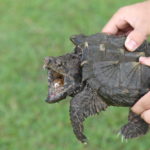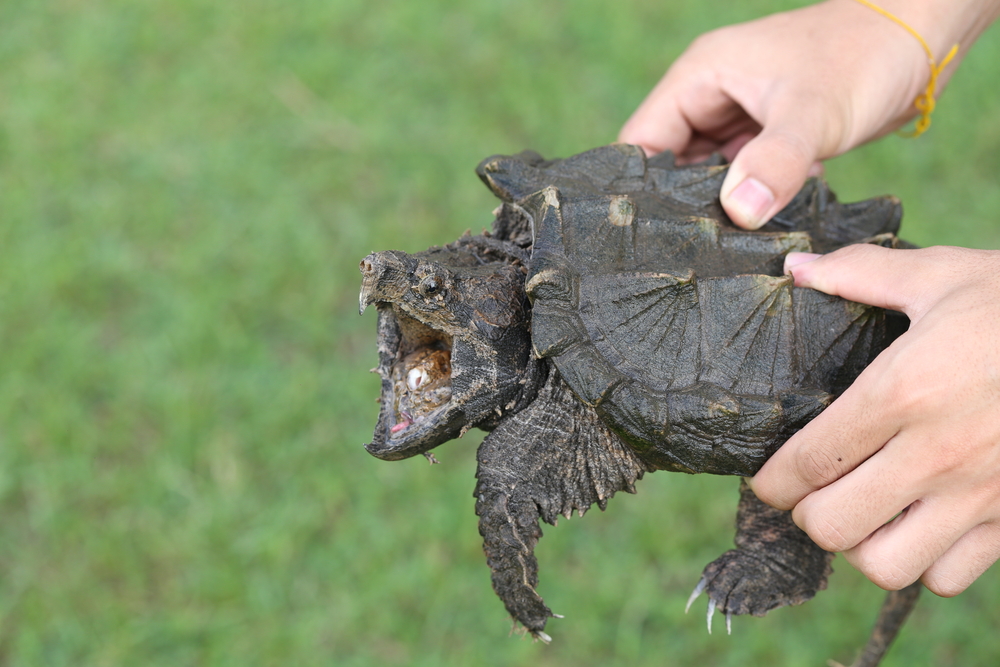Common Snapping Turtles, scientifically known as Chelydra serpentina, are among the most intriguing and misunderstood reptiles in North America. Known for their aggressive behavior and formidable appearance, these turtles play a crucial role in aquatic ecosystems. Understanding their behavior and conservation needs is essential for preserving this remarkable species. This article provides an in-depth look at the behavior, habitat, and conservation efforts surrounding common snapping turtles.
For a more detailed exploration of these fascinating creatures, it’s important to delve into the specific behaviors and conservation strategies that help sustain their populations. Explore the behavior and conservation of common snapping turtles to gain comprehensive insights into their world.
Physical Characteristics
Common Snapping Turtles are easily recognizable by their rugged appearance and distinct features:
- Large Size: Adult snapping turtles can weigh up to 35 pounds and measure up to 20 inches in shell length. Their powerful jaws and long, serpentine necks add to their formidable look.
- Rough Shell: Their shells are typically dark brown to black and have a rough, ridged texture. The plastron (underside of the shell) is relatively small, providing less protection than in other turtle species.
- Powerful Limbs: Equipped with strong, clawed limbs, snapping turtles are adept at digging and navigating through their aquatic habitats. Their claws help them grasp prey and anchor themselves in the mud.
Behavior and Ecology
Common Snapping Turtles exhibit unique behaviors that contribute to their survival and ecological role:
- Feeding Habits: Snapping turtles are opportunistic omnivores. They feed on a variety of prey, including fish, amphibians, invertebrates, and even carrion. They also consume aquatic vegetation, making them important players in maintaining the balance of their ecosystems.
- Aggressive Defense: Known for their aggressive behavior when threatened, snapping turtles will snap and bite to defend themselves. This aggression is primarily a defense mechanism, as their reduced plastron leaves their underside vulnerable.
- Solitary Nature: These turtles are generally solitary, except during the breeding season. They are highly territorial and prefer to spend their time submerged in water, with only their eyes and nostrils exposed.
- Hibernation: In colder climates, snapping turtles hibernate during the winter months. They burrow into the mud at the bottom of ponds and lakes, slowing their metabolism to survive the cold.
Habitat and Distribution
Common Snapping Turtles are highly adaptable and can be found in a variety of freshwater habitats:
- Aquatic Environments: They inhabit ponds, lakes, marshes, rivers, and slow-moving streams. They prefer habitats with soft, muddy bottoms and abundant aquatic vegetation.
- Wide Distribution: Their range extends from southeastern Canada through the eastern United States and as far south as Florida. They are also found in parts of Central America.
- Environmental Tolerance: Snapping turtles can tolerate a range of environmental conditions, including brackish water and polluted habitats. However, they prefer clean, well-oxygenated water for optimal health.
Reproduction and Lifecycle
Understanding the reproductive habits of common snapping turtles is key to their conservation:
- Breeding Season: Mating typically occurs in the spring, and females lay their eggs from late spring to early summer. They travel considerable distances to find suitable nesting sites, often on sandy or gravelly soils.
- Egg Incubation: Females lay clutches of 20-40 eggs, which incubate for about 75-95 days. The temperature of the nest determines the sex of the hatchlings, with warmer temperatures producing females and cooler temperatures producing males.
- Hatchling Survival: Hatchlings face numerous threats from predators, including raccoons, birds, and fish. Only a small percentage survive to adulthood.
Conservation Efforts
Common Snapping Turtles are not currently endangered, but they face several threats that necessitate conservation efforts:
- Habitat Destruction: Wetland drainage, pollution, and urban development threaten their habitats. Protecting and restoring aquatic ecosystems is crucial for their survival.
- Road Mortality: Many snapping turtles are killed by vehicles while crossing roads to reach nesting sites. Wildlife crossings and public awareness campaigns can help reduce road mortality.
- Illegal Harvesting: Snapping turtles are sometimes harvested for their meat and shells. Strict regulations and enforcement are needed to prevent overharvesting and ensure sustainable populations.
- Public Education: Educating the public about the ecological importance of snapping turtles and the threats they face is vital for their conservation. Encouraging coexistence and respectful observation can reduce human-wildlife conflicts.
Conclusion: Preserving the Common Snapping Turtle
In summary, common snapping turtles are remarkable creatures with unique adaptations that allow them to thrive in diverse environments. By understanding their behavior, habitat needs, and the threats they face, we can implement effective conservation strategies to ensure their survival.





